The tale is as old as time, you’ve bought a plant and a week later it’s wilted down to its last leaf. You watered it, gave it some sun, and thought it was happy. But it clearly isn’t happy. So you throw it away and quit all together. Don’t get discouraged as all plants have their own unique care recommendations, that many people overlook. I’ve broken it down into 5 steps on how I keep my plant babies alive, healthy, and thriving. Becoming a plant mama in 2017, I’ve learned a lot on the do’s.
Tip #1 Rotating
This one is extremely obvious and probably the most overlooked practice. Frequently rotating your plants will ensure even growth amongst the entire plant. If you have your plant up against a window of light, only that one side of the plant will ever receive that sun. Rotating your plant regularly can ensure you are promoting even growth. Think of it like tanning, if you always keep your face covered but your body in the sun, it will only make sense that your face shade doesn’t match the sun glistened body glow. Rotate whenever you remember or feel like it.
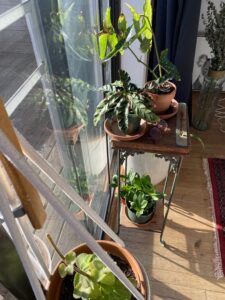
Tip #2 Watering
Another very overlooked practice, letting your plant tell you when it needs to be watered. Not all plants retain the same amount of water and some plants require a more damp soil in order to thrive. Not any one plant is exactly the same in terms of watering needs. Yes there will be general patterns amongst different species, but you really need to let the plant tell you when it’s seeking a watering. The easiest way to tell if you put your finger in the soil. About an inch into the potting mix. Anything that feels dry, I encourage a watering. If the soil feels moist, check back on that plant in a day or two. Regularly checking your plants for dry soil will also get you more familiar on how many days pass on average when you start to feel that dry soil. This is your baby and it requires individual love and attention.
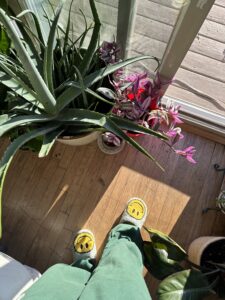
Tip #3 Repotting
Plants will grow as large as their pot will let them, given the right circumstances. The thing many might not be aware of is the plants will continue to grow. If you haven’t heard the term root bound, let me enlighten you. Root bound plants have grown as much as they can in the current potter and are tightly packed together, usually at the bottom of the plant. In some instances, these roots will even start to grow and flow out of the small water holes. It’s simply trying to grow, and the current home is no longer big enough to support it. The plant is like a crab. Sometimes Mr.Krabs needs a new shell because he’s outgrown his current home. A rootbound plant is no different.
Some tips when repotting include being very gentle. You want to massage the pot and soil before you attempt to rip it out of the current potter. I also recommend using gloves. As soil can get under your finger nails. Small garden tools can be helpful but are not required.
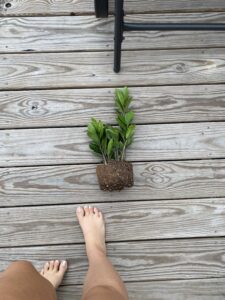
Tip #4 Resources
Don’t be afraid to lean on your abundant and free online resources. If you have a difficult or finicky plant, I’m sure someone else in the world has encountered the same problem you’re experiencing with it.
For resources, you can utilize a simple google search or download some very popular apps, I would suggest starting with Planta.
Tip #5 Propagation
One of the most beautiful things about a plant is it’s ability to regrow. There are so many types of reproduction including pollination, sexual reproduction, germination, spore, grafting, the possibilities are somewhat endless. One thing I was gifted on my birthday this year was a homemade propagation set. The idea is that you can take a plant leaf and set it in water. After a few days to a few weeks, you’ll start to notice that the leaf has grown some ‘plant vessels’ as I like to call them.
More times than not I am using stem propagation. Meaning a leaf that has fallen off, or accidentally gotten snagged off. I will place that leaf in the water of the propagation station. And bam, with a few days of patience, sunlight, and water miraculously you will see new root growth. Once the root growth is visible, it’s as simple as repotting that leaf in a fresh batch of soil. Just don’t forget to give it a good water upon repotting.

And just in case you’re still not sold on these tips, let me show you some progress using these best practices in real life.
In 2017, my first Aloe plant came with me to my junior year apartment at UConn. A sweet, minimal effort succulent sat on my window sill.
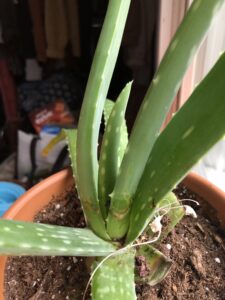
A sweet innocent succulent and a naive owner, who had no idea this plants potential.
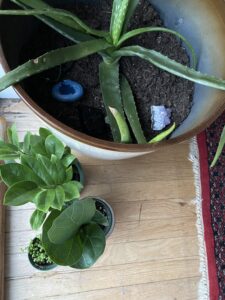
I repotted her into the largest potter I owned in 2021.
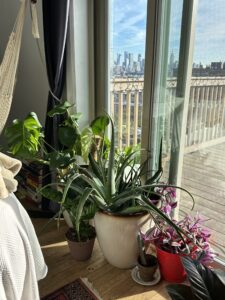
Remember her? The little 8″ Aloe plant. It’s the end of 2023 and here she is now. The largest plant I own. I use her for sunburns, curling/heat burns, or dry skin. Incredible in my opinion.
Don’t give up on your plant’s growth easily. It takes time, patience, and intention. Once you hone in on wanting the growth of your plants you will be motivated by the results before your eyes.
